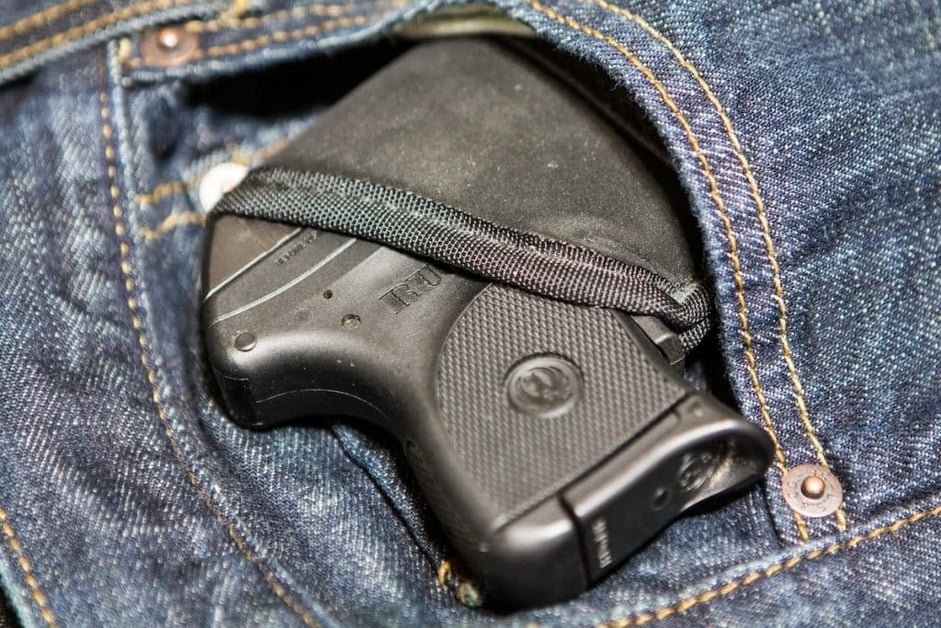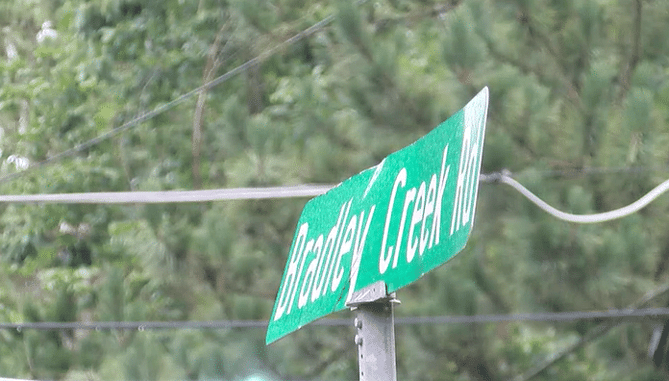By Salvatore via USA Carry
I get it. Carry the biggest gun you can. I am a believer in that. I carry a double-stack autoloader the majority of the time. I find that most people can carry a more formidable gun than they think and I encourage all to do so. However, most of us lead lives in which we can’t always carry a full-size or compact handgun. We may frequently have the need for a very small and concealable firearm, and a pocket gun is better than having no gun under such circumstances.
If you must spend time in environments where you need to dress in ways that make concealment difficult or if you spend time in environments where you absolutely can’t afford to print, then you will not always be able to carry your primary handgun. For those of you who never need to dress in anything other than your 5.11 pants and always carry a service pistol and at least two spare magazines, good for you. For those of you that actually work in the real world, you may need a pocket gun for certain times, even if you don’t pocket carry it.
Small guns are a two-edged sword. They are so convenient to carry that you may find you are content to wear your small frame revolver or 380 auto instead of strapping on your more capable gun. This practice is not ideal, as carrying more gun is always better. However, the real benefit of a small gun is that you can go armed at times when you otherwise could not if you only maintain larger handguns in your lineup. Many need a small gun to cover those times that don’t permit your usual carry gun, which may be quite often depending on your lifestyle. If you are not already squared away with a deep concealment pocket gun, consider the following:
The Guns for the Role
I often refer to exceedingly small handguns as pocket guns, even though you obviously don’t have to carry them in a pocket, and these are very small firearms that can be worn in a variety of places on the body and go unnoticed. A lot of people have different opinions regarding what really constitutes a pocket gun. Some claim that they can carry a Glock 26 or similar sized double-stack auto in their hip pocket. Most can’t do this. Even the small single-stack 9mm autos tend to be too large for pocket carry for most people. The two classes of guns that tend to be ideal pocket guns are the small auto loaders typically chambered in 380 acp or the small-frame revolvers. Again, even if you don’t pocket carry, you will find that these two categories of handgun can be carried easier than most else. These firearms work for deep concealment and also serve many well as backup guns when carried as a second handgun.
While many do not consider small auto loaders chambered in 380 adequate defensive tools they are far better than being unarmed if they are the only size gun you can carry. My personal preference for deep concealment is a small-frame revolver. Guns like the Smith and Wesson J Frames and the Ruger LCR represent this class. The even smaller 380 autos, typified by guns like the Ruger LCP or the Smith and Wesson Bodyguard, are indeed smaller yet and even easier to carry. The revolver has the benefit of being chambered in a more powerful cartridge and being generally more reliable. You need to fully test the reliability of the small autos but if you have one that is truly reliable these make good deep concealment guns.
Where will you Carry It?
The next question to ask yourself: where will you carry your deep concealment gun? I tend to suggest minimizing your different carry locations because in a time of stress you will instinctively reach for your gun in the location it is most often carried. However, you obviously may need to carry a deeply concealed firearm differently. Some common methods for carrying a small gun are in the pocket, on the ankle, or in a belly band. There are also a variety of deeply concealable holsters available that are designed to fall below the waistline and some folks like these options.
Of course, you may be able to carry your small gun in the same way you carry your larger handgun but the sheer size difference may allow you to carry the small weapon when unable to use your primary. Consistency of carry location is very important and you should strive to minimize how many ways in which you carry your firearm. Being able to accommodate any dress or situation while wearing your gun in the same location is great, if you can do it.
My personal choice for deep concealment is carrying a small-frame revolver in a belly band under my clothing. The gun rides on strong-side-hip, like my usual carry mode. This setup works excellent under tucked-in formal shirts, which is the primary dress limitation that prompts me to sometimes need this deep concealment setup. The difference, however, is that the tucked-in shirt needs to be ripped up and out of the waistband in order to access the gun, so it is a slower presentation than my normal carry mode.
You will often find that the better the concealment the less accessible the gun is. This is the tradeoff for remaining armed. I have also utilized ankle carry and pocket carry in the past, but seem to have settled on the belly band solution for such deep concealment needs. Figuring out an alternate deep concealment carry mode takes time and experimentation. While I most often carry a substantial handgun and recommend the same I will take a pocket gun over not gun any day. This is the purpose such tiny weapons serve; they offer an alternative to no gun.
A pocket gun, whether actually pocket carried or not, is a valuable weapon to have in your arsenal. A gun that is generally small enough to pocket carry proves truly small enough to disappear on the human body. These little guns are difficult to shoot well and they are far less capable than a full-size or compact pistol but they facilitate carry when otherwise you would be unarmed. Carry the most capable gun you can at all times that you can, but if restricted to a pocket gun or nothing the pocket gun is the much better option.


![[VIDEO] Armed Robber Shot And Killed By Quick-Thinking Concealed Carrier](https://imagedelivery.net/sbm_lYeJbALkepJgtmRD5w/concealednation.org/2019/08/ScreenHunter_2568-Aug.-28-16.20-1.jpg/w=728,h=381)











